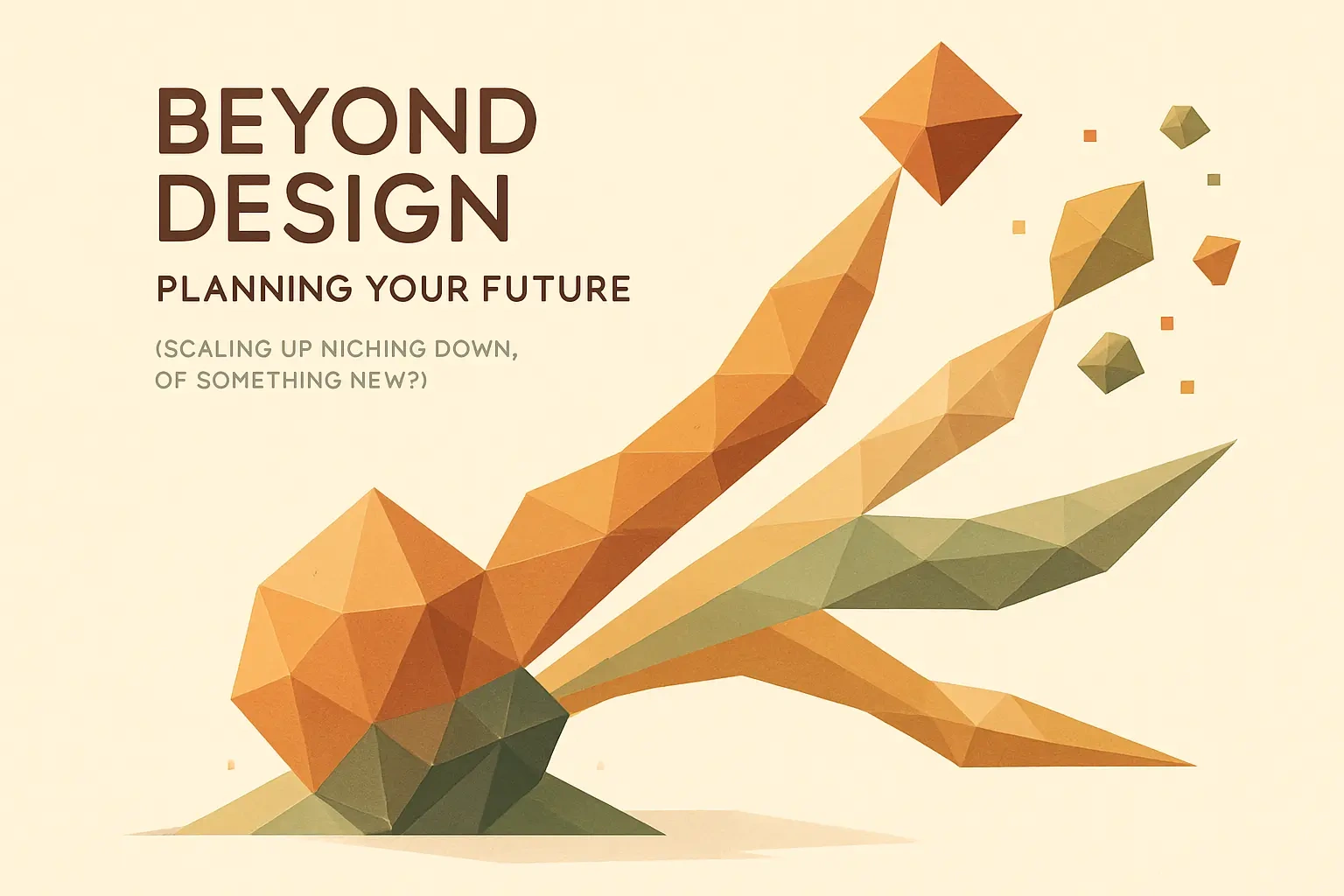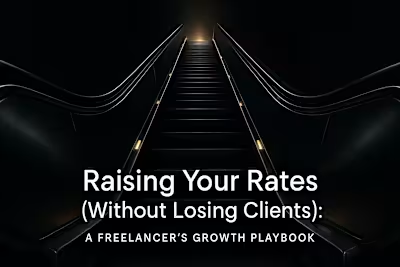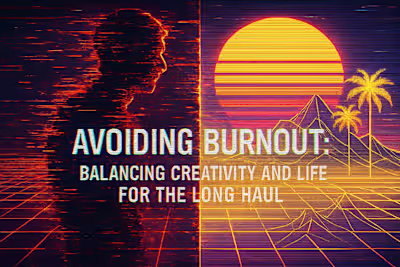Beyond Design: Planning Your Future (Scaling Up, Niching Down, or Something New?)

Beyond Design: Planning Your Future (Scaling Up, Niching Down, or Something New?)
Path 1: Scaling Up - From Freelancer to Founder
The Vision: What Does a Design Agency Look Like?
Growth Levers: Expanding Services and Clientele
Is This Path for You? Self-Assessment Questions
Path 2: Niching Down - From Generalist to Go-To Expert
The Power of a Niche: Why Specialization Pays
How to Find Your Niche: Industry, Service, or Style?
Marketing Yourself as a Specialist
Path 3: Pivoting - Exploring New Horizons
Leveraging Your Skills: From Designer to...
The Creator Path: Courses, Templates, and Digital Products
Financial Planning for Your Future
Conclusion
References
Beyond Design: Planning Your Future (Scaling Up, Niching Down, or Something New?)
Path 1: Scaling Up - From Freelancer to Founder
The Vision: What Does a Design Agency Look Like?
Growth Levers: Expanding Services and Clientele
Is This Path for You? Self-Assessment Questions
Path 2: Niching Down - From Generalist to Go-To Expert
The Power of a Niche: Why Specialization Pays
How to Find Your Niche: Industry, Service, or Style?
Marketing Yourself as a Specialist
Path 3: Pivoting - Exploring New Horizons
Leveraging Your Skills: From Designer to...
The Creator Path: Courses, Templates, and Digital Products
Financial Planning for Your Future
Conclusion
References
Posted Jul 6, 2025
What's next in your design career? Explore the strategic paths beyond day-to-day freelancing, from scaling your business to niching down as an expert or pivoting entirely.









